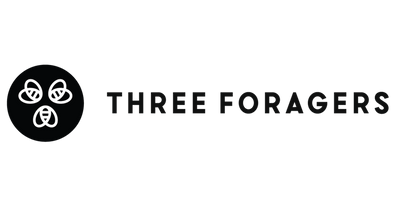

· By Three Foragers
How Honeybees Get Their Jobs
Honeybees are one of the most collaborative insects in the world. It’s almost unbelievable to think about thousands of bees working together in harmonious unison for the survival of the colony. But it’s true! On our honey farm, we get to witness these amazing creatures thrive every day. Each bee has a specific job to tackle, and it’s important that the colony has a balance of workers fulfilling all the roles inside and outside the hive.
This begs the question, with a brain the size of a sesame seed, how do bees know which job to perform and when? Is there some sort of honeybee HR department? Well, it all starts with maintaining a healthy balance of drones and workers.
Maintaining A Balanced Hive
There are three types of bees in a hive: the queen, female workers, and male drones. A drone’s job is to mate with the queen, the queen’s job is to lay eggs, and all the other jobs are fulfilled by the workers.
The queen has the incredible ability to control the sex of her offspring. If a queen lays an unfertilized egg, it will develop into a drone, and a fertilized egg will turn into a worker. Around 10-15% of a colony is made up of male drones.
After males are born, they wait for a queen from a different colony to take a mating flight. Then, they fly out of the hive, mate with her, and die. As they wait for a mating opportunity, they hang out around the hive eating raw honey.
The Life Of A Worker
Worker bees do most jobs in the hive, from cleaning, to raising the young, to foraging for food. All of these duties are built into their genetic makeup. As a worker bee grows older, hormones are released, activating the part of their genetics which tells them which job to do and when to do it. This way, all the different tasks are tended to.
A Worker Bee’s First Job
Worker bees go to work immediately after they emerge from their metamorphosis. Their first job is to clean the cell from which they emerged. This readies the cell for another larva or for honey storage, whichever is required by the hive.
After three days, the worker bee shifts into nurse bee mode, caring for the younger brood that succeeds them. They perform these nursery duties for about a week.
The next stage in a worker bee’s life is becoming a general handyman inside the hive. This involves a myriad of duties which include
building honeycomb with beeswax
fixing up holes in the hive with propolis
cleaning the hive of debris and carcasses
fanning honey to lower the hive’s water content
acting as guard bees at the hive’s entrances.
This stage lasts around a week and a half. Then the worker bees take on their most dangerous, yet most famous job, foraging.
A Worker Bee’s Final Job
The workers leave the hive, searching for pollen and nectar up to 6km away. If a honeybee finds a new patch of blooming flowers, it heads back to the hive to tell all the other bees about its discovery with their famous waggle dance.
When bees are foraging, they collect pollen in their corbicula, or pollen basket, to bring back to the hive. They also suck up as much nectar as they can, which they will deposit at the hive to turn into raw honey. As the bees visit flowers, they also perform all the pollinating duties required for plants to reproduce.
The worker bees will forage for about 2-3 weeks, after which point they die. During a typical worker bee’s life, they produce about 1/12 teaspoon of raw honey.
When our honey farm harvests honey, we never take more than what the bees need. This way, our bees can thrive all year long! If you have any questions about life inside a beehive or about our delicious raw honey, leave a comment below or send us a message on Facebook!
Share:
1 comment
-
This is so interesting and amazing.
Gail on
